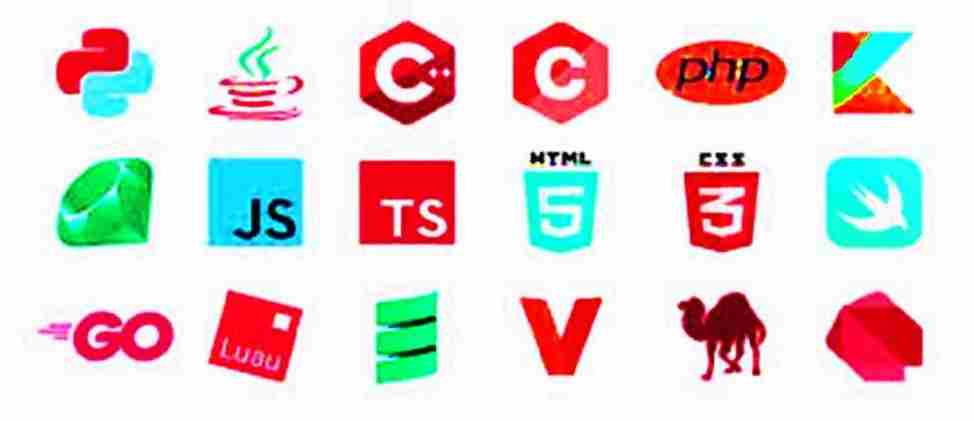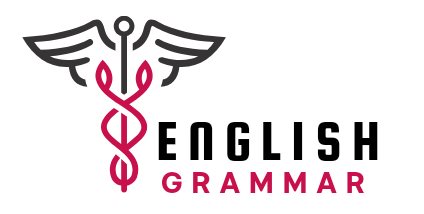Language is consisting of sounds and words used by humans to express thoughts, emotions, and ideas. | Role of Language in Human Life Communication.

Definition of Language :
A comprehensive definition of language would encompass it, as a system of communication consisting of sounds, words, and grammar used by humans to express thoughts, emotions, and ideas. It’s not just about words but also about the rules and structures that govern how those words are combined and interpreted.
Role of Language in Human Life Communication

Language is a remarkable aspect of human existence, serving as the foundation for communication, culture, and connection through which we express thoughts, share experiences, and build relationships.
1. The Evolution of Language :
The evolution of language is a subject of extensive research and debate among scientists and linguists. It is a unique attribute of the human species. It is a complex system of communication that allows us to convey thoughts, emotions, and ideas through a combination of sounds, gestures, and symbols.

Early humans likely used simple gestures and sounds to communicate. Over time, these rudimentary forms evolved into complex systems of spoken and written language. The advent of writing, approximately 5,000 years ago, marked a significant milestone, allowing for the recording and transmission of knowledge across generations.
Tongue and Language :
The human tongue, a small muscular organ nestled within our mouths, is a marvel of biological engineering. It enables us to perform a plethora of functions critical to our survival and social interaction.
The Relationship between the Tongue and Language is a testament to the ingenuity of human evolution. The tongue’s remarkable flexibility and control have enabled the development of complex languages.
The Mechanics of Speech :
Speech is produced through a coordinated effort between the brain, respiratory system, vocal cords, and tongue. When we speak, the brain sends signals to the muscles in the mouth and throat, instructing them to move in specific ways.
The tongue, along with the lips and jaw, shapes the airflow from the lungs to produce distinct sounds.

Different parts of the tongue are responsible for producing different sounds. For instance, the tip of the tongue is used to create sounds like “t” and “d,” while the back of the tongue is involved in sounds like “k” and “g”.e is a complex structure made up of muscles, nerves, and blood vessels, covered by a mucous membrane. These movements are essential for various functions, including tasting, chewing, swallowing, and speaking.
Language Diversity :
Some languages, such as Mandarin Chinese, rely heavily on tonal variations, where the pitch and intonation of a word can change its meaning entirely. In contrast, languages like English depend more on the combination of consonants and vowels to convey meaning.
The diversity of languages reflects the richness of human cultures. Each language offers a unique perspective and way of thinking, adding to the tapestry of human experience.
2. Role of Language in Human Culture :
Language and culture are inextricably linked, forming a complex, interwoven tapestry that shapes our perceptions, interactions, and understanding of the world. Language is a key component of cultural identity.
It carries the nuances of a culture’s history, values, and traditions. Language is deeply intertwined with culture, shaping and reflecting the values, beliefs, and traditions of a community. It is through language that cultural knowledge is passed down.
Cultural Significance :
Every native language carries the essence of the culture it represents. It reflects the values, traditions, and history of a community. By preserving and using our native languages, we maintain a connection to our heritage and ancestors.
It allows us to keep our traditions alive and pass them on to future generations. diversity.
Technology also plays a significant role, with apps, social media, and digital content providing new platforms for learning and practising native languages.
Native Languages :
A native language, also known as a mother tongue, is the first language a person learns from birth. It’s the language spoken at home and is usually passed down from one generation to the next. Our native language holds a special place. It’s the language of our childhood, the one in which we first learned to speak, understand, and connect with the world around us.
The native language is not just a means of communication; it’s an intrinsic part of our identity and cultural heritage. By valuing and preserving our native languages, we honour our past and enrich our future.
3. Sign Languages :
Sign languages are a fascinating and vital means of communication for millions of people worldwide. They use a visual-manual modality to convey meaning, encompassing a rich tapestry of gestures, facial expressions, and body movements.

Let’s explore the vibrant world of sign languages, their history and significance, and how they bridge communication gaps.
A Brief History of Sign Language :
In the 18th century, Charles-Michel de l’Épée, a French educator, founded the first free school for the deaf in Paris. He is often credited with developing the foundations of French Sign Language (LSF). This work sparked interest and led to the establishment of other sign languages globally, each evolving uniquely within its community.
There are hundreds of sign languages worldwide, including:
- Auslan (Australian Sign Language) :
Used in Australia and influenced by BSL. - Chinese Sign Language (CSL) :
One of the oldest and most widely used in the world.Japanese Sign Language (JSL):): known for its complex system of honorifics.
Linguistic Features of Sign Languages :
Sign languages are fully-fledged natural languages with their own unique features. They are not merely gestures mimicking spoken language but have their own structure.
Key elements include:
- Phonology :
Unlike spoken languages that use sounds, sign languages use handshapes, movements, and locations.
- Morphology :
The formation of signs can change meaning, suchas by as by modifying the speed or intensity of a gesture.
- Syntax :
The order of signs follows rules that can be quite different from spoken languages.
Body Language and Facial Expressions :
Facial expressions and body language play crucial roles in sign languages. They convey emotions, grammatical information, and nuanced meanings that hand signs alone cannot.
For instance, raising eyebrows might indicate a question, while the intensity of a sign could emphasise urgency or importance.
- Education :
Ensuring deaf children receive education in their native sign language can significantly improve learning outcomes.
- Accessibility :
Public services, media, and emergency information in sign languages ensure inclusivity.
Mental Health: Effective communication in one’s native language is crucial for mental well-being.
Learning Sign Language :
Learning sign language can be a rewarding experience for anyone. It opens up avenues for communication with a whole new community and enhances empathy and understanding. Various resources are available, from online courses to community classes, making it more accessible than ever.
4. Role of Language in the Digital Age :
The internet and social media have facilitated the creation and spread of new forms of communication, such as emojis, memes, and internet slang. These digital languages are evolving rapidly, reflecting contemporary trends and the dynamic nature of online communities.

In the interconnected world of the 21st century, digital languages play a crucial role in communication, technology, and culture. Digital languages are foundational to the modern digital landscape. They enable seamless communication between humans and machines.
Types of Digital Languages :
The role of digital languages will only become more significant, driving progress and shaping the way we interact with the digital world.
Digital languages include programming languages like Python and Java, markup languages like HTML and XML, and even the symbolic language of emojis.
Programming Languages :
Programming languages are the most recognised type of digital language. They enable developers to write software, create applications, and develop websites.High-level programming languages are designed to be more user-friendly, lowering the barrier to entry for aspiring developers and allowing more people to contribute to technological development.

Some popular programming languages include:
- Python :
Known for its readability and simplicity, Python is widely used in web development, data analysis, artificial intelligence, and scientific computing.
- JavaScript :
Essential for web development, JavaScript powers dynamic behaviour on most websites.
- Java :
A versatile language used in everything from mobile app development to large-scale enterprise systems.These languages provide the tools to build the digital world we interact with every day.
Markup Languages :
Documents can be organised and arranged using markup languages. They are essential for web development and data representation. Examples include :
- HTML (HyperText Markup Language) :
The standard language for creating web pages, HTML structures content on the web.
- XML (eXtensible Markup Language) :
Used to store and transport data, XML is pivotal in web services and software applications.
- Emojis :
Emojis have become a universal digital language. They convey emotions, reactions, and ideas quickly and effectively across different cultures and languages. Emojis enhance online communication by adding a layer of expressiveness that words alone often cannot achieve.
5. Role of Language in Society :
Language plays a crucial role in society, serving as the primary medium through which we communicate, share ideas, and build relationships. Its influence extends to various facets of societal functioning.

Understanding the nature and role of language enriches our appreciation of its profound influence on individual and collective human experience.
The Nature of Language :
Role of Language is more than just a set of rules and symbols; it is a living, evolving entity. It evolves over time, adapting to changes in culture, technology, and society. Words alter their meaning;; fresh varieties are developed and old ones become outdated.
Education and Economic Opportunity
Language proficiency is closely linked to education and economic opportunities. In many societies, fluency in the dominant language is crucial for academic success and career advancement.
Education systems worldwide recogniser the role of language skills, often emphasising bilingual or multilingual education to prepare students for a globalised world. Language learning not only enhances communication skills but also fosters cognitive flexibility and cultural awareness.
6. The Biology of Language :
At the heart of our ability to use language is the brain. Specific areas,areas, like Broca’s area and Wernicke’s area, are crucial for speech production and comprehension. Broca’s area, located in the frontal lobe, is primarily involved in speech production and articulation.
Neuro scientists have also discovered that the left hemisphere of the brain is generally more involved in language processing. However, the right hemisphere contributes to understanding the emotional tone and context of speech, highlighting the brain’s incredible complexity in managing role of language.
7. The Psychology of Language :
Psychological factors also play a significant role of language. Our emotions, past experiences, and expectations can shape how we interpret language. For instance, a compliment can be perceived as genuine or sarcastic, depending on the speaker’s tone and the listener’s mood.
8. The Future of Language :
Role of language in modern world has become more interconnected. Technological advancements like artificial intelligence and machine translation are breaking down language barriers, allowing people from different linguistic backgrounds to communicate more easily.
9. The Endangerment of Languages :
Despite the benefits of globalisation and technological advancement, many languages are at risk of extinction. Resulting in the loss of identity and cultural legacy. Language preservation is crucial for maintaining cultural diversity. When it dies, a wealth of cultural knowledge and heritage is lost.
10. Professional Communication :
Professional settings demand a different linguistic approach. Here, role of language tends to be more structured and formal. Whether it’s writing emails, drafting reports, or participating in meetings, the goal is clear and precise communication.
11. Persuasive Language :
Persuasion is a critical function, role of language, especially in advertising, politics, and the media. Persuasive language aims to influence opinions and behaviours. Effective persuasive language can inspire action, change minds, and drive social movements.
12. Instructional Language :
Teaching and learning rely heavily on clear and accessible language. Instructional language is used in educational settings, manuals, and guides. Its purpose is to explain concepts, provide directions, and facilitate understanding.
Simplified vocabulary, step-by-step explanations, and visual aids often accompany instructional language to enhance comprehension.
13. Technical Communication :
Technical communication is used to convey complex information clearly and accurately. Role of language in this type of language is prevalent in fields such as engineering, computer science, and medicine, where users can follow instructions and understand technical concepts.
14. Legal Language :
Role of language in legal language is characterised by its precision and formality. It is used in laws, contracts, and legal proceedings to ensure clarity and reduce ambiguity. Legal language often includes specialised terms and phrases that have specific legal meanings, which are essential for upholding the rule of law and ensuring justice.
Conclusion :
Role of language is not just a means of communication; it’s a dynamic tool that adapts to our needs and contexts. From everyday chitchat to complex technical writing, the ways we use language reflect the diversity and richness of human experience.
Understanding these different uses can enhance our ability to communicate effectively, fostering a better understanding.

